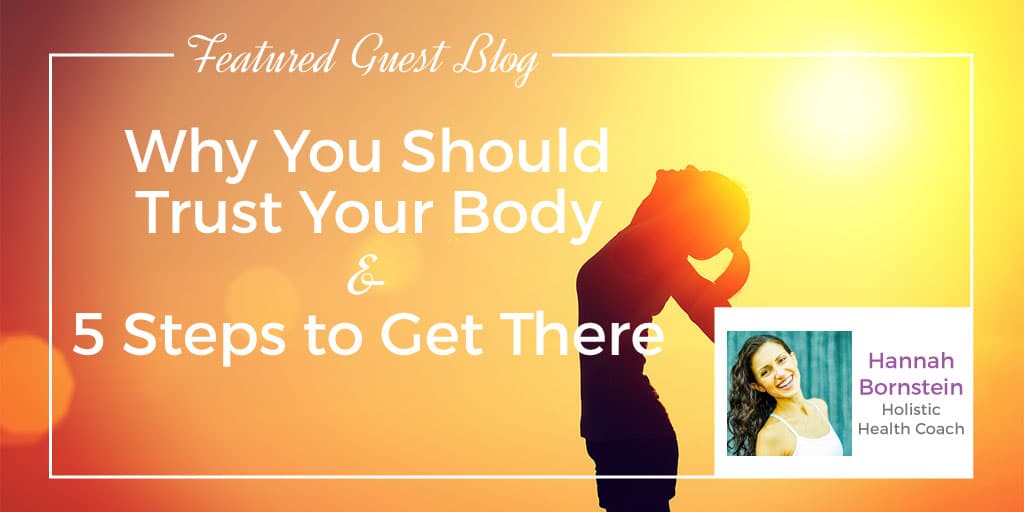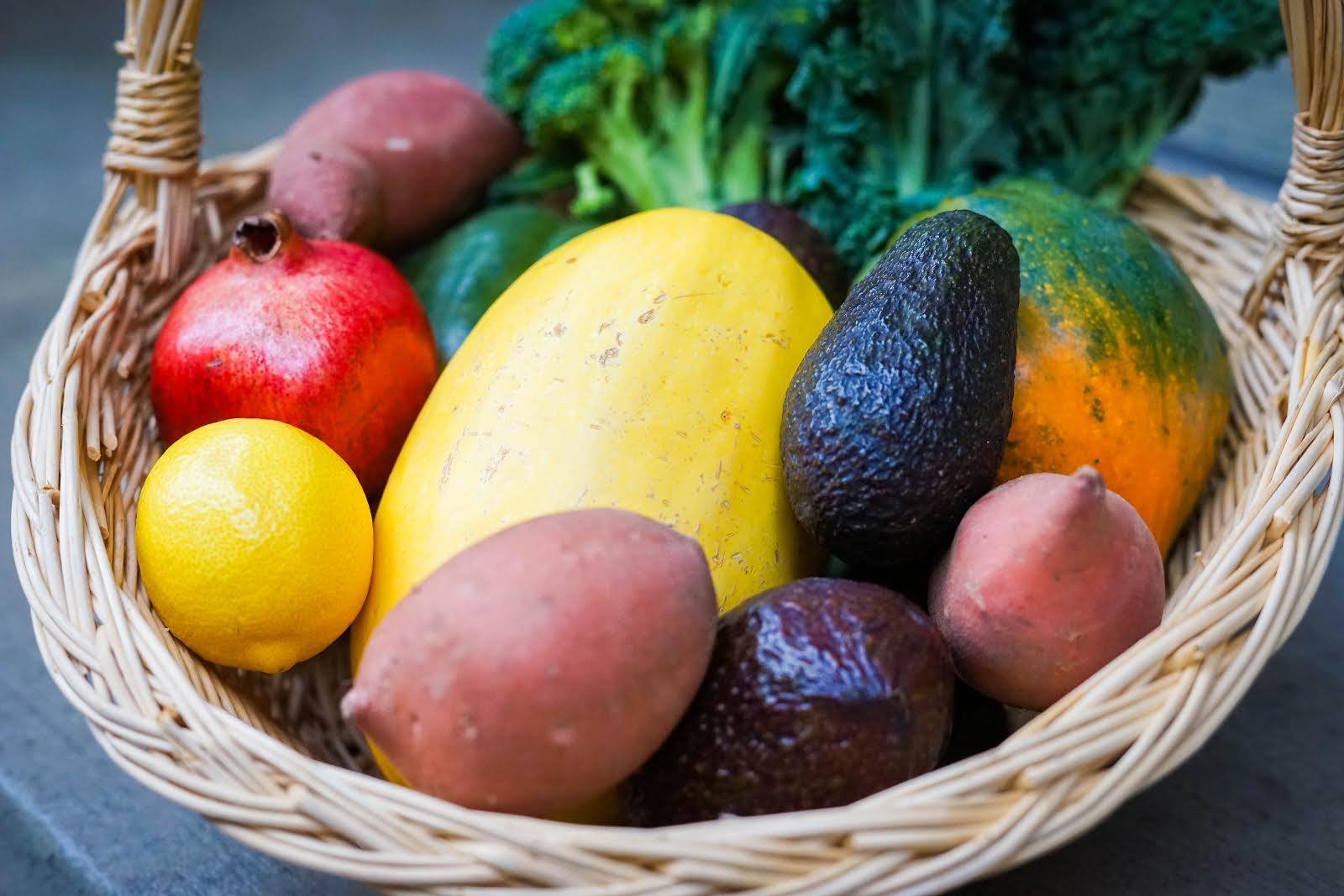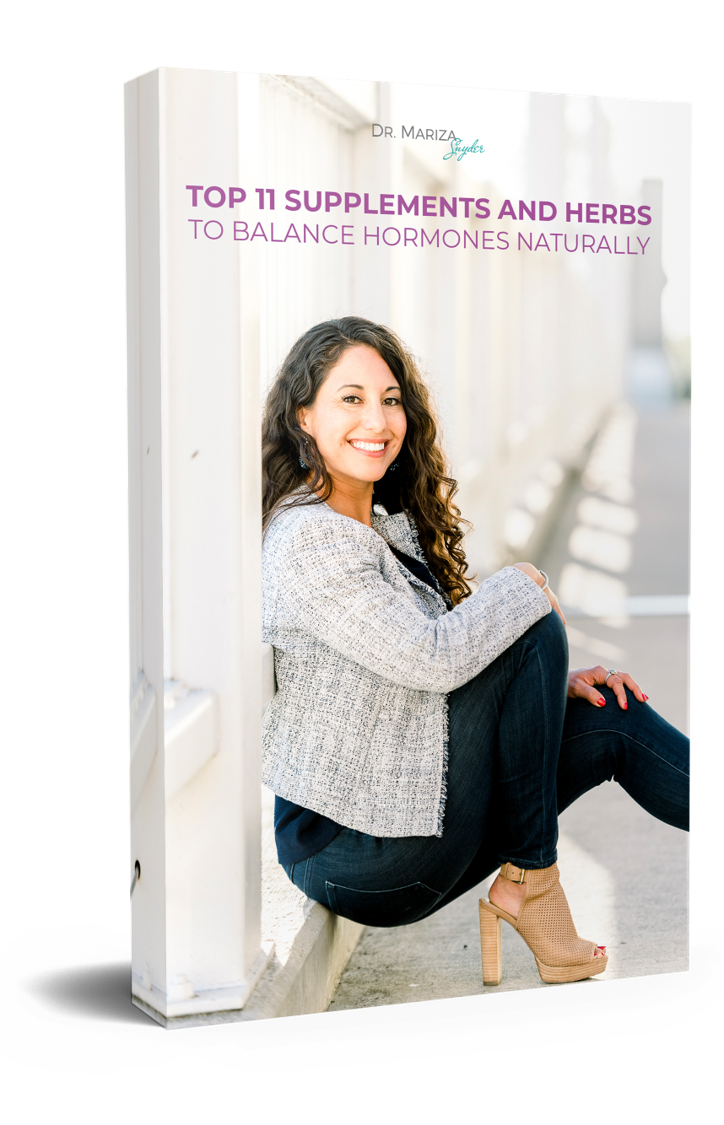
By Hannah Bornstein, Holistic Health Coach
Note from Dr. Mariza: I am so excited to feature this blog from Hannah B Wellness, a NYC-based health coach and fitness instructor. I was introduced to Hannah through my husband, and I immediately resonated with her health philosophy and plant-based diet recommendations, as they are so close to my core beliefs about health. Hannah’s specialty, besides being an amazingly energetic and passionate fitness instructor, is teaching her clients to be in tune with their own bodies. Today, Hannah shares tips on how YOU can trust your body and make choices in your every day life that make you look and feel great.
How many times have you been at a grocery store, restaurant, or even in front of your refrigerator and felt totally confused and helpless about what you should eat? With all the endless food options, mass-marketing from food companies, and new studies coming out every day that tell you a new food that will either kill you or heal you, it can be overwhelming to make the seemingly simple decision of how to nourish your body at any given moment. So what do we usually go for? Either something we know tastes good, something we know we “should” eat (because it’s low-carb, gluten-free, paleo, raw, low-calorie, etc.), or literally whatever’s in front of us. Ok, cool – so what about what your body actually needs?
I’m a huge believer in a concept called bio-individuality – the idea that everyone’s body is completely unique, so no one diet is right for every person. This concept can be totally freeing (“I knew I didn’t notice a difference when I went gluten-free!), but it also comes with a lot of responsibility. You are the only person in the world who actually lives in your body. Every day you walk around in it – eating, drinking, working, playing and sleeping. You are the only person who experiences your body’s needs and what happens when those needs are either met or denied. You experience hunger, you are the one who has to be kept up at night with a stomachache or nausea if something doesn’t sit right with you, you are the one who feels brain fog or bursts of energy. So while there are some principles and guidelines that everyone can take cues from to eat healthfully, you have to literally listen to your gut to guide you to what you and your precious body need within those guidelines at any given moment. When you can learn to listen to the cues of hunger, cravings and energy levels your body gives you, you will find that knowing what, when and how much to eat will feel a lot less daunting, and your body and mind will feel vibrantly nourished. The key to learning to do this is to develop a relationship of trust with your body.
How, you ask? Well, I will not lie and say it’ll happen overnight. It takes time to learn the subtleties and nuances of your body’s needs and be able to recognize what foods make you feel your best. But there are some simple steps you can take immediately that will start to get you more in the groove of your bod’s rhythm, and pretty soon you will be movin’ and groovin’ so fluidly that no grocery store aisle or encyclopedia-sized menu will stop you!
1. Be a journalist: your body and diet are your story.
Keep a food and symptoms journal. Get curious about your current eating patterns and choices and if they’re working for you. It’s not about calorie-counting or getting all your portion sizes correct. The purpose of this is to build awareness around how you feel when you eat certain foods at certain times.
Get writing: I find it helpful to write an entry for each snack or meal that includes the time you ate, what you ate, and how you felt before and after (emotional and physical). Make a note if you have any unusual feelings or sensations. You don’t even need to go back and look at this journal (unless you want to). The point is to start bringing to your attention the way particular foods affect you. If you are consistent about this (but no need to get totally stressed if you miss a day or a meal), you will naturally start to build an internal library of knowledge about which foods make you feel awesome and which make you feel bleh.
2. Get sensual.
Eat with all five senses! When you give your body the opportunity to fully take in the food you’re eating, you are giving yourself a chance to be aware of which foods not only taste good to you, but which feel, smell, and even sound good. All of these elements contribute to your preferences as an individual, and often correspond to what your body is truly craving. For instance, foods that are rich in alpha and beta carotene (which the body then converts into immune-boosting vitamin A) are often a bright orange color, so if you notice that carrots, sweet potatoes and oranges are suddenly looking exceptionally beautiful and tasty to you lately, it could mean that you are actually in need of a little immune support. Or if the juiciness of the tomatoes in your salad is particularly satisfying to you, you may be in need of hydration and are therefore craving high-water content foods. If the snapping sound when you bite into a raw carrot is grating to you, your body may be telling you that it’s having a tough time currently digesting raw veggies.
In action: Before eating, take a moment to take in the colors, shapes and textures in your food. Then take a whiff and take in its scent. When you take a bite, give yourself time to fully chew before swallowing so you can notice how each bite feels in your mouth, its crunch or smoothness, and the full complexity of the flavors. Take mental note of your favorite part and least favorite parts of the meal. Slowly begin to use the preferences of your nose, eyes and ears to help you decide what to eat before preparing it – sniff some spices, seek out the most colorful veggies at the store, and think about what food texture you feel like experiencing.

Take in all the colors, shapes, textures and flavors of veggies and whole foods
3. Ditch the menu.
Have you ever had “choice paralysis” when ordering from a particularly involved or lengthy menu? There’s so much pressure to pick the best thing they’ve got – what if this is the only time you ever come to this restaurant and you got the wrong thing?
Get over the FOMO: When you’re out to eat, avoid looking at the menu at all. Just think about what you feel like eating. Lots of cooked vegetables and a grain? A creamy stew with something crunchy on top? A light, flavorful salad with a little sweetness? A warm hearty dish with a spicy kick? When the server comes around, describe what you’re looking for and ask them what they have that most closely fits the criteria. If the options they describe don’t make the cut for you, then take a (quick) peek at the menu and pick the thing you find would most fit what you described. Put the menu away and focus on your company (even if it’s just you) – your connection with them is probably way more nourishing than any food you could eat.
4. Befriend hunger and fullness.
The modern human race is about 200,000 old – the modern human lifestyle is infantile in comparison. We now have busy work schedules and routines that keep us on a very specific clock every day. Our eating can often become super regimented because of this. Whereas our ancestors mostly foraged and gathered their food when hunger struck, we now just eat a deli sandwich at 12:30pm every day because ummmmmm….that’s when lunch is and that’s “lunch food”?
Use hunger and fullness as your guides: Experiment with only eating when you are truly hungry. Make it a goal to stop when you are no longer hungry, no matter how much food is on your plate or in your bowl. Respect the messages from your body about your satiety and see what kind of response you get! Your digestion, energy and mental clarity may improve, and you will be able to get a better sense of when and how much you actually need to eat. Disclaimer: this can be surprisingly difficult, so be gentle with yourself. If you sometimes ignore what your body has to say, just move on and make note of what caused you to start or continue eating when you weren’t hungry. Notice the difference between physical hunger and boredom/anger/sadness/loneliness hunger. Feed physical hunger with food and the other types with self-care practices you find nourishing (i.e. taking a walk, meditating, giving yourself an essential oil rubdown, reading, knitting, playing with your dog, dancing naked in your bedroom – whatever fills you up with peace and joy!).
5. Praise your bod!
How awesome is it that we walk and talk and breath and think and digest and blink and heal without having to tell our bodies to do so? How amazing is it to have these complex vessels that allow us to express our souls and spirits physically? The more you can appreciate the sheer miracle that you are alive, the more respect and trust you’ll start to develop for your body.
Write your body love notes: Keep a gratitude journal by your bed and write down three amazing things about your body every night. “I walked all over New York City today – in flip fops – and my feet didn’t fall off!” “All of my co-workers got sick this week and I’ve stayed healthy!” “I got sick but then I got better!” “My ass looks AMAZING in yoga pants.” Anything that comes to mind – nothing is too big or too small to appreciate.
When you can trust your body and truly appreciate your body, figuring out when and what to eat won’t feel like such an overwhelming task. You’ll be able to actually enjoy the food you eat without guilt or worry, knowing that you are making the right choice for you. You can then focus your mental and emotional energy instead on the people, ideas, and thoughts that light you up. Don’t worry, your bod’s got your back – literally.
Hannah is a New York City-based fitness instructor and holistic health coach. She specializes in helping her clients develop deeper relationships with their bodies, eat intuitively and add plant-based foods into their diets to feel energized, free of the burden of food obsession, and confident in their unique, special bodies. You can check out her website, for more about her story, plus plant-based recipes and tips for living a whole-hearted, vibrant life.


No comments yet.